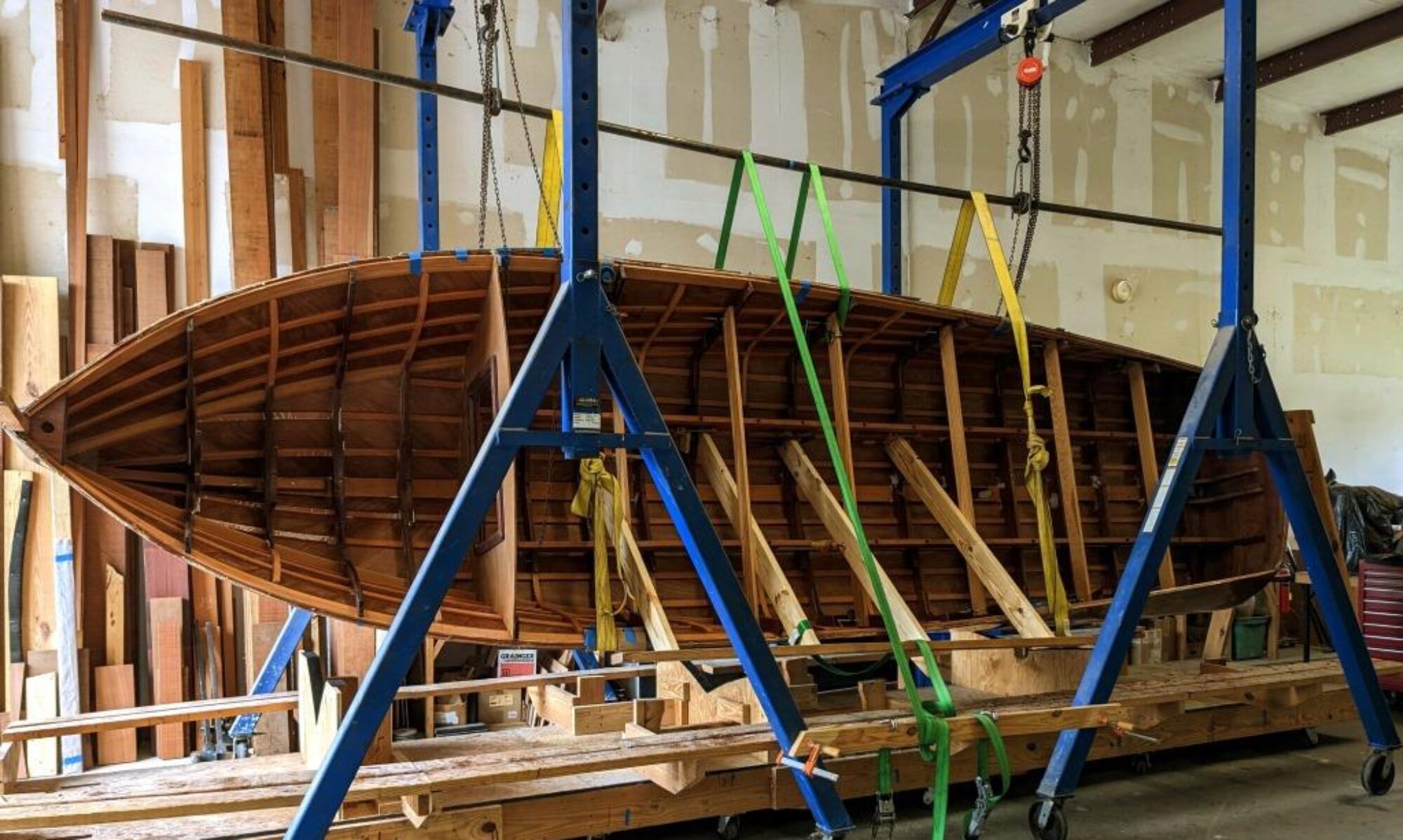
You can wait until the bottom is installed to drill the shaft hole and the rudder-post hole in the keel and line everything up. But why not do it now, before the keel is permanently installed? It is so much easier when you can bolt everything on to fit it without having to hop in and out of the boat 50 times. OK, 50 times might be a bit of an exaggeration even for klutz like me, but it does take a few tries to make sure everything fits properly. So I do it with the keel sitting off the boat so I can reach around all the pieces while I’m standing there.
You’ll recall we discussed Mounting the Strut a while back. With that job done, you install the strut temporarily and use it as a guide to drill the shaft hole. This is made easier by asking your shaft fabricator to make you a nice temporary bushing that will fit inside the cutlass bearing in the strut and guide your drill bit at the proper angle. I use a drill bit extension and a 1-1/4″ forstner bit since the shaft has a 1″ diameter.

Since this hole is at such a shallow angle to the keel (19°) I clamp a block at the point where the bit enters and exits the keel to make sure a clean entry and exit hole. Then it’s just a matter of taking it slow and clearing the hole of sawdust often. Don’t push too hard as you might cause the bit to drift off-line. You might as well go slow and enjoy it since it took so long to set this up!

Then flip it over and bore another, larger partial hole to create the pocket for the shaft log.

And then mount everything to make sure it lines up. You’ll want to mount the rudder, strut, shaft, and the shaft log. Of course there will be the inevitable cleanup with a wood rasp and round file, chisel, gouge–whatever your tool of choice is.
Once you’re satisfied, seal this hole well with 2-3 coats of epoxy. This would be a great place for water to migrate into your keel and allow the growth of rot spore.
